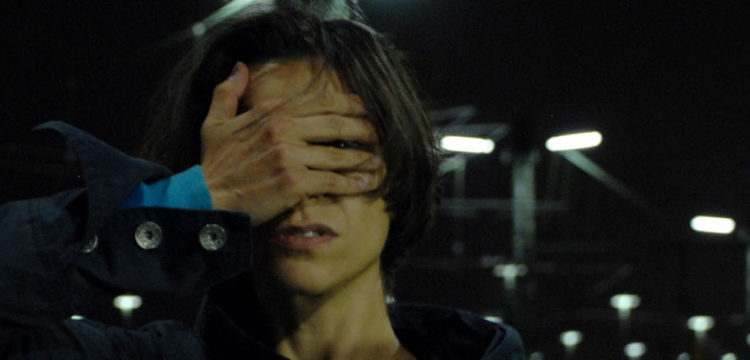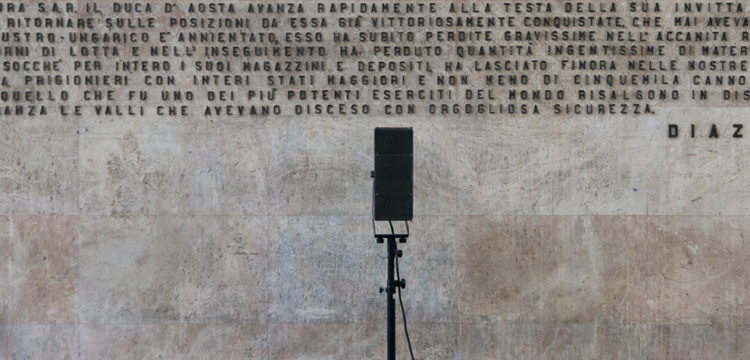Everyday Life Practice
On how to turn the usual banal everyday family drives to into spontaneous recording sessions in the car
Xing/Live Arts Week presents in Bologna YEAH YOU (Gustav Thomas and Elvin Brandhi), an artistic formation composed of father and daughter. Originally from Wales, they move on an ever-changing logistic, making improvised musical and geographical excursions on board of their car: that’s the base of their Kh-art’ (Car-art). This interview has appeared in Italian on SentireAscoltare.
Gaspare Caliri: How was Yeah You born? Does it come from an everyday life practice or from a musical project?
Elvin Brandhi: YEAH YOU WAS BORN OUT FROM ITSELF. It was not either of our idea. The method, aesthetic, all come from pure necessity. A kind of first resource last resort. Excavation of domestic loop. A Family First Aid Fit? We reinterpreted ourselves not by reaching for an external beyond but twisting its original footing. We are a pre-conceptual band!
We had a shared interest in POP. The music of the now, the symbolic-order, instructive vogues of collective mythology. Contagious culture. If it had been planned properly we might have been making Welsh Folk, restoring trampled narratives to enrich a cloning self-regurgitating era of conviviality defined as a simultaneous streams of mono-loops! But the essential was to comprehend what was going on right now around us. In 2012, were a clumsy, inefficient Instagram-prototype, filming and recording every day spontaneous pycho-pop routine-invasions.
Gustav Thomas: Thinking of the second part of your question, I’d say definitely “everyday life practice.” I’ve never wanted a job and Raoul Vaneigem’s book The Revolution of Everyday Life is a good source of brass invective against “work” in the employed sense. But obviously I had to, and when I started working full-time in the early 90s I carried a handheld tape machine everywhere because I resented the way that work meant I couldn’t make art or music so much anymore. So without ever thinking about it making music anywhere, anytime just became the way I was living—and the first recordings of me and Elvin playing together come from these times too. But that’s where the car or random public spaces and roadsides became studio/performance spaces for me… Yeah You actually came out of us trying different hardware that Elvin could use in a live set-up for her solo stuff. We have really long recordings from those early weeks. The point at which all that gravitated from being in the house to being in the car and the side of the road is something I really can’t recall, almost as if the alchemy of chemical forces melding into some spirit alloy can only ever be invisible, like we were in a trance or hypnotized. In a way it remains a kind of vividly meshed self-hypnosis. After that it’s just dialectics, which is something I’ve tried to implement in as basic and organic a way as possible since reading CLR James. The way that works with music performance is, on a basic level, forever starting again, a perpetually mobile This Instead where you’ve never yet made any music, forget about whether you’ve ever achieved anything. Epic dissatisfaction, livid disarray. Which brings us back to the “everyday life practice” thing: people are generally taught, manipulated, to think of music and performance as a separate dimension to “daily” routine, something you work to fix and finalize with a “special” concert. When it’s kept within the frame of functional necessity, where it’s not just like the multiple exchanges of routine immersion but it is them, eats them and gnarls them out in an accusatory spew, then it can actually change the way you think about anything.
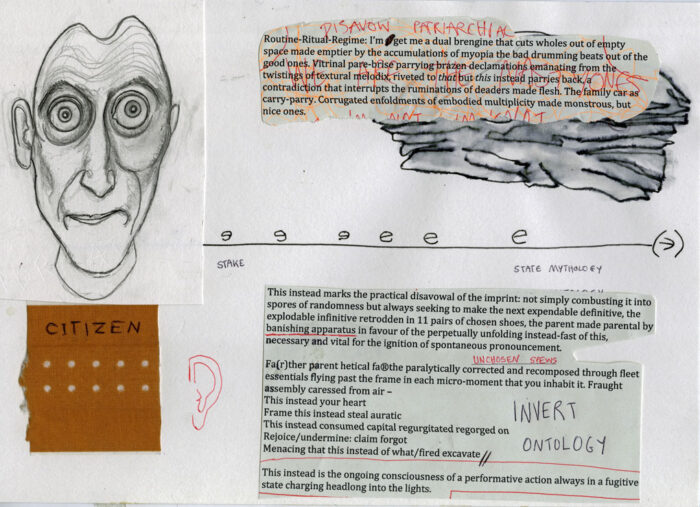
How has it changed over the years?
EB: IT! US! We have changed. When I moved out, we were no longer pushed to search for ways to sabotage the working life loophole and forge the way for creative practice, we met when summoned specifically to perform. We mostly meet through random geographic collisions for a few days in the flow of our separate routines. Now that random events are our main locus of connection, it’s going back to family, Christmas etc. that feels weird.
The excruciating intimacy of our entwined psyches makes very vivid encounters with new publics, directly influencing the seams of our guttural context regurgitating aesthetic. Influences intentions shift all the time but these an essential CORE, of being part of the same life force that is invulnerable the intensity of touring and creating together. I think that’s interesting because conflicts can be used and don’t threaten the existence of the duo, we synthesize antagonism.
GT: The main changes have been marked by shifts back and forth between form and the deformed, depending on the context and each stage of regression, away from art. As Elvin suggests, each new public affects the flow distinctively and independently of each other. I’ve always felt light years away from what I can sense any performance is reaching out to touch—the less you focus the more clarity you find and that’s something that has continued to evolve over the years we’ve been doing this. I’m curious about the family issue. I’m trying not to trivialize the question: Yeah You are two subjects or only one?
EB: The family as issue is based on audience interpretation. Hence the inverse reflexive throw the question back, “Yeah, You?” We can’t be neutrally packaged in a sense because each person’s conceptualization will depend on their own precept of what the FAMILY is. The family label is awkward in that magnifying way that prevents us falling into self-stereotype, the band on tour. Everyone’s reaction to the idea of an umbilical absurd, “father/daughter” duo is always different depending on their relation to the idea of family. We provide a weird mirror-warp of disembodied social codes.
GT: I’m not sure if I quite understand what you mean, about the “two or one.” But I sort of want to say, “absolutely two,“ and “absolutely one.” For myself I’ve really never understood what the hell is going on with Yeah You, to be honest. When I was 10, we were visiting a Slovene family at a seaside house in Piran where you can only get into the sea by negotiating precarious rocks beneath the surface. There was a storm, a massive storm it turned out, coming and the sea erupted into a squall. I made my dad come out with me, over these jagged rocks. At some point a huge wave picked us up and spewed us back onto the shore. I was small enough to glide unscathed but my dad was all carved up and caved off, craven hard to the gnashing flux.
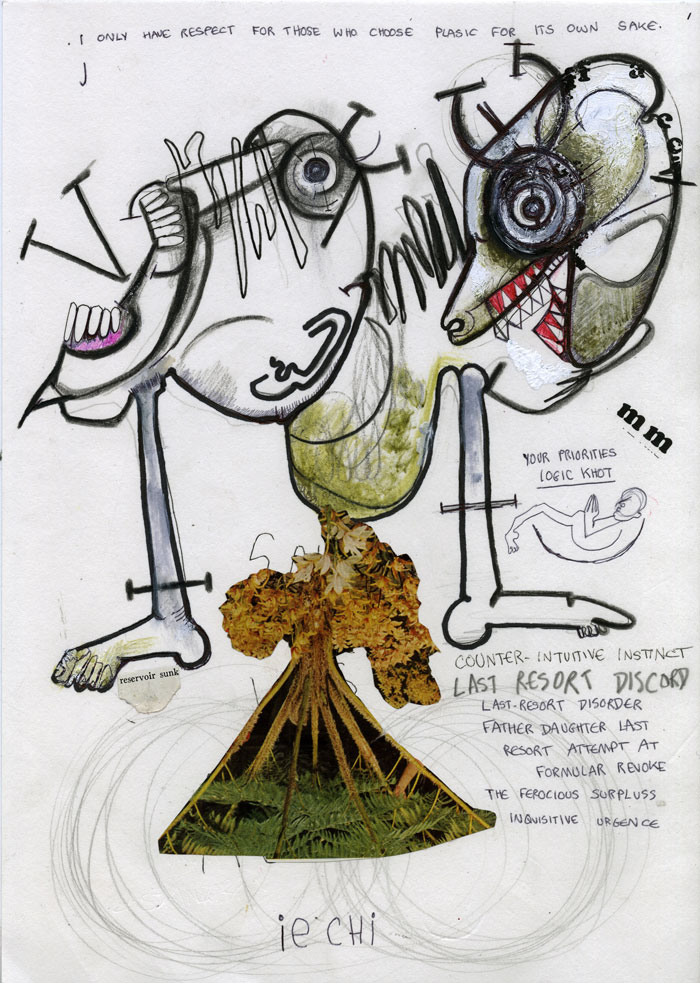
In the 1950s, psychogeographic exercises were used to rewrite the city in a non-homologated way through alienating paths. I see a closeness: how does your practice overwrite the landscape? How does the outside get in the car?
EB: I was just reading The Art of War by Eyal Weizman where he talks about how psycho-geographic theory has been adopted by the Israeli Defence Forces in order to dismantle the city in an experimental and subversive way.
I’m not saying that this takes away from the original ideas, but it emphasizes the importance of the practical interpretation of theory. Politics speaks not in how we theorize action but how we activate theory. It also opens up the idea that you can use knowledge against the intention of its inscription. The car is a carcinogenic contraption and symbol of individualist ideology. We have counter-intuitively altered it’s presumed function. We use it as a readymade stage for post-futurist theatre, where the drive by attention span required of the audience correlates to the Instagram minute limit and the viewer has no responsibility to the performer. Using it against its advantage creates new advantages. There are many windows for the audience to view the performers from different angles and we perform within an eloquent array of rapidly shifting set designs!
We de-privatize the speed-cocoon through which the family unit can sail un-assumed, allowing exposition of the as is, conflating the standard metrics of public, personal space.
GT: You see a closeness, and that is accurate. Although the principle of dérive was always that the landscape and the setting (usually urban of course) would shape the course of the journey, or the walk or whatever—in our case, the drive. What we did most of the time would be the same set of journeys, week to week, as part of normal rituals and routines and the recording would overwrite the same pathways which in turn turned in on themselves so that a specific journey would become its own sub-narrative? Where the dérive DOES come into Yeah You is when we’re touring, traveling unfamiliar roads and pathways and we’re allowing new landscapes to suggest locations for situated performances. Iceland was probably one of the best places for that because of the unique, almost unearthly environment…
Ten years later, in the 1960s, the car began to concentrate counter-cultural attention as an object / status symbol to be dismantled. I am thinking of the Dutch Provos for example.
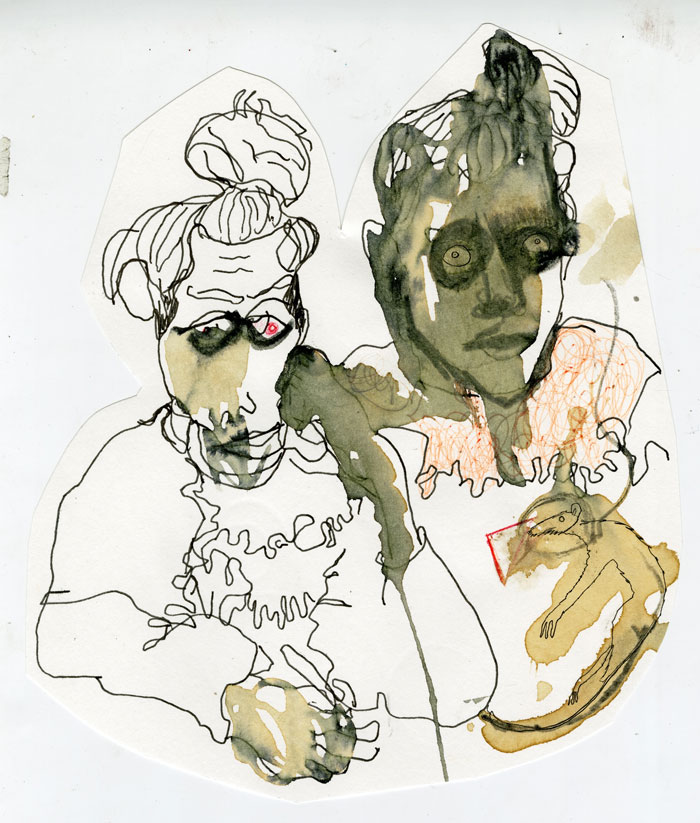
Now you reaffirm it as a nomadic device. How does this object interact with your practice?
EB: I don’t know that much about Dutch Provo. But I like that you’re focusing on the car, because in this Bologna performance, it is portrayed as an artistic tool. But the reason we initially chose to work with it, to pull it apart is because it was not a choice. Within the capitalist time regime the car kind of is an enforced supplement to the functional family.
There was a need to make a distinct choice within the scope of imposed compliance. This is the “this instead” car, an antithesis to passive oppressive rewarded acquiescence. It’s not so much an affirmation of the car, but a defiance of it. Reaping it’s defects…. To invert the privileged passivity of the passenger and to drive yourself to an exaggerated psychological intensity, driving the mind as fast as the car is driving the body in order to refuse its service in creating surplus—death drive.
A similar re-functionalizing, dissociative discipline I try to apply now more to consumer technology. The mobile is the new auto-mobile! ubiquitous speed at the cost of immobility. A further optimization of the atomized user that can, even in public, function in absolute privacy.
GT: I have only ever read the chapter on the Dutch Provos in Stewart Home’s book, so I don’t know much either. But Situationism, the SI, Situationist thought has always been important for me and I guess that feeds into Yeah You. I like how you suggest that we reaffirm the car as a nomadic device, because that definitely rings true. Using it as a
space to make something is secondary to its capacity to make incisive cuts through the clutter of accumulated detritus, reshaping its detournement style but in a totally fluid, constantly moving way. It’s not only the private property of the means that becomes dismantled but the very idea of the art product too—each song made on the way to a shop gets left in its own sweep.
And there’s a Dutch Provo connection historically maybe? The whole of our album KHOT (as well as most of much of KRUTCH) was made on drives back and forth to Amsterdam during a tour of the Low Countries, mostly night drives…
The car is also a cranium, its content can only be the outside, except in a real head there are thoughts and counterpoints that bask in their imperceptibility: Yeah You disembowels reflection and tangles it up with all the things that people on the outside are trying to pretend aren’t there.
EB: YEAH exactly. Like the impossible imperative of the rear view camera on the new electric car, “please look in all directions.” Which we apply literally by looking inward as well as outward… It’s a funny catch. The driver is offered a situation in which they can be totally sealed off from the world but have to pay constant attention to it. Freedom as individual dependence. Which again is why the iPhone is the car’s foetus.
What are you doing in Bologna? Can you tell us something about “This Inside”? And, why did you decide to make an ephemeral use of Wikipedia?
EB: I enjoyed reading this mistake! THIS INSIDE!!! The gregarious pulling the plug of genetic-cultural mutant, human overflowing the emoticon identity package. THIS INSTEAD, BOLOGNA! is a first real intimation to officially perform in the car. Various performances will take place in the car in different points in the city and there will also be a film screaming.
We wanted to make use of wikipedia to provide updates as each performance takes place, to make a clear distinction between self-promotion and documentation as between hypothesis and history, and to archive the immediate, viewing the present from a historical perspective, the seemingly weightless fleeting provokes inevitable repercussions.
Unfortunately, with respect to Wikipedia we have not yet qualified as encyclopaedic. It’s something we will continue to work towards. It was an attempted “this instead” spirited alternative to social media. Here, since it is the last question, Below, I will copy and paste the drafts I made for the encyclopaedic exposition of our intent, that would have been a wiki explanation of what it is.
“This instead” is a principle of decoding-codes of conduct first proposed by the living surrealist art project Yeah You* in October 2019. It was proposed as an interactive psycho-geographic method of activism which struggles against the Passive Oppression inherent to the prosumer of the global market, and the goal of Safe cities as a political architecture of absolute control.
This Instead is an active principle of private/public performance, insisting upon the infinite capacity for intensity to undermine one immediate conditions; i.e. behavioral norms, bureaucratic delimitation, cultural values, including its own hypothetical intentions. There are no prescriptive rules of conduct as it must relate directly to the immediate infrastructure within which this act takes place. Activity is motivated not by outcome, but aims to maximize immediate energy in order to radically shifts the possible outcomes preceding its induction. THIS INSTEAD is not fatalist, it is determined that commitment to the counter-intuitive lurch can practically redirect energy from the behavioral conscription, towards alternative social production.
It stems in antithesis to the defeatist militance of pro-acceleration ideologies which denounce the possibility of any alternative to capitalism, proposing collective acceleration of its processes as only way of provoking its collapse. This is however is a prediction and with its occupation with future denominations undermines the capacities of the present to manipulate its conditions.
“This Instead” boycotts predication, attempting excavation of the user-friendly zone, consumer, public space, via invocation of the fluke, a seemingly folkloric concept in an era of control and pre-determination. The military laboratories of self-fulfilling prophecy and mass surveillance. The horizon inebriated 20th century Futurists triggered a possessive impingement on the future as a free fall. Their manifestations forged way for the future, for science, technology to develop unbridled, at the cost of a toxic security, a stunted development of practical creativity, humane psychology and community consciousness. Yeah You as a father-daughter diptych unpin the foundations of societal precepts evoking an art that is incapable of being more theoretical than it is practical, as it exists mostly independent of cultural pedestals. The Experimental is culturally respected in theory, but where attempts to apply itself to social conduct, psychology, medicine, science, history, its status as inferior to logic becomes evident.
Against contemporary cult of logic, Yeah You propose a Fluke Folk, improvised tradition that transcends the allocated contexts for the absurd. From the Domestic out, they redistribute antithesis. Act as antiseptic for the toxic norm.
Fate and fluke, is distinct from institutionalised fluctuation. What may seem like an avant-garde transformative progressive flow is intelligently implemented chaos. The deliberate distribution of psycho-somatic states of limitlessness, function to prevent the user-subject from tracing the source of their subjugation. The vertigo thus incurring is assumed to be a type of radical freedom, masking the absolute cohesion of sensibility.
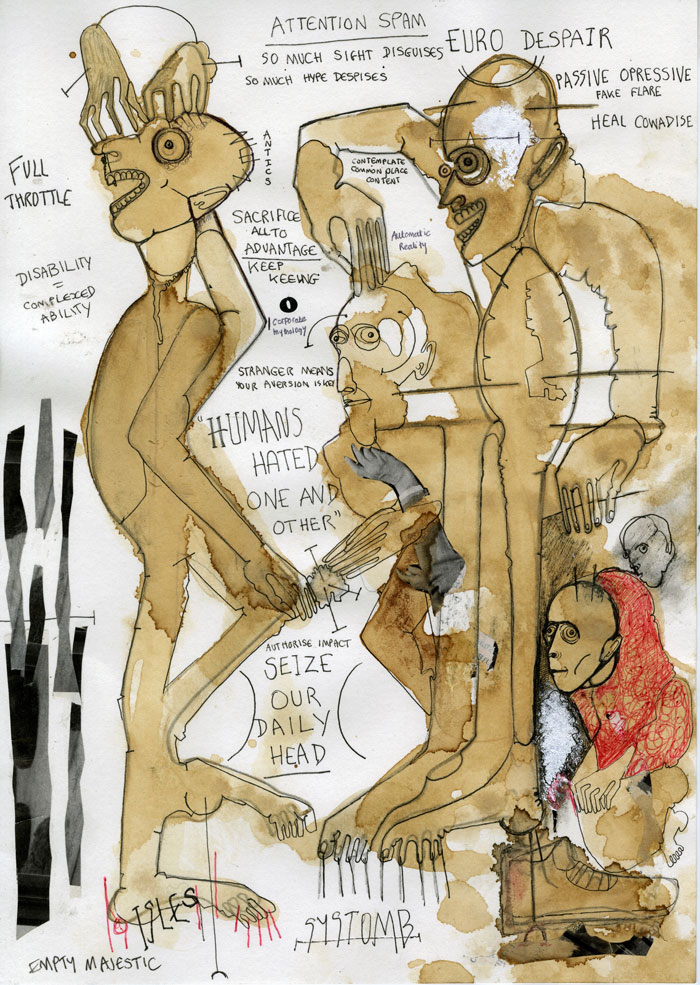
The concentration of their research into this principle relates to their extensive archive of reinterpretations of both public and private space. Daily hacks into the domestic routine constituted the organic development of the duo’s engagement since January 2013, coined at the time as Improvised pop, as reverse filtering of the public ideals manifest in the subtle values excreted by popular music. This formed the body of research and schizo-analysis from which “This Instead” grew.
The first official interactive inversion was scheduled to take place in March 2020, hosted by Live Arts Week Bologna and XING. Due to the coronavirus pandemic the performance is now taking place in September 2020, under a new array of embedded conceptions inextricably related to the current pandemic’s re-characterization of collective space and the choreography of public behavior.
They will perform, from their car parked in various pinned locations of public intersection as well as in transit. This creates a new in-between public and private alloy, such as live streams have achieved during the lockdown, but in an inverted way. The involuntary public will have no encoded reference for the encountered performance and the interface through which the live act is distributed is beyond their control. The private and public worlds interfere with each other without submitting to a common denominator of time and space, but in our case unlike the live stream, the element of the unknown, the risk, the unprecedented, is retained. Interpretation, in the classical way happens simultaneously or latterly, whereas with the live stream, it tends to happen before, or is based largely on presumption, expectation of the consumer who chooses to click watch, drawn in by title, aesthetic etc.
Our cities are slowly imitating the user friendly domains, where control, surveillance, absolute predictability and user-determined, physical relates that correspond exactly to a virtually navigated activity. Previously due to the hypothetical universal threat of terror now more and more the industries of fear are profiting from the pandemics appeal to monitoring citizens activity and biochemistry. These intercity performances take place on the boundary between private and social and attempt to negate surveillance and claustrophobic predictability by instigating the uncredited, defying the auto-correct citizen.
This moment of spontaneity might erupt as stimulation of the disused receptors for positive empowered unprecedented, the philanthropic intrusion, a creative rupture. A moment where the unprecedented is comforting. The overspilling of domestic confines into the public circuit.




